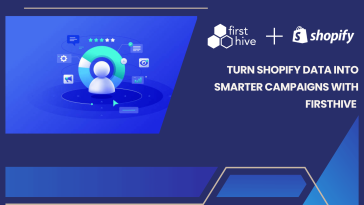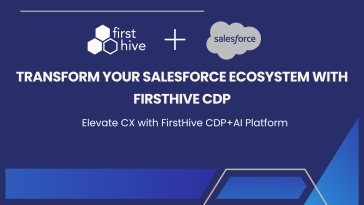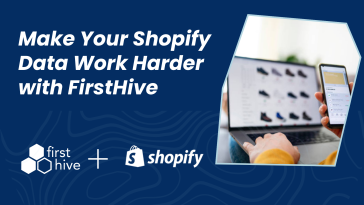One of the biggest challenges Credit Unions face is competing with large banks and other commercial financial institutions who have the advantages of deeper pockets, smarter technology, and better resources that help them target a larger member base with better products. However, there is more to it. They also know their customers better than ever, and they accomplish this by using data tracking tools and analytics.
With the rise of peer-to-peer lending and other innovative products, financial technology companies are also offering competitive services, new payment options and even the possibility of banking via social media. In fact, it is estimated that 33% of young people don’t expect to need a bank in five years’ time. So, the fact is that Credit Unions not only face fierce competition from banks but also, other industry players of their own breed.
As a Credit Union marketer, if you had to pick the top three things to focus on right now in order to stay competitive, then we recommend you start with these.
- Increase the existing member base to increase revenues.
- Tackle competition while they are engaged with your brand at a personal level.
- Retain existing customers to increase operating revenue and hence, their Life-Time Value.
In this article series, we aim to solve these challenges by answering one of the following questions in each episode.
- Customer Acquisition: How to increase your member base?
- Customer Retention: How to retain existing members and sell more services to them while improving the average operating revenue coming from your existing members?
- Customer Engagement: How to engage your members and stay in constant touch to improve loyalty and satisfaction levels among them?

How to increase your Member base?
The first thing that comes to your mind while finding ways to increase member base is to — improve the interest rate spread. But, there is a large shift in the member demographics that need to be considered. Credit Unions were made with a philanthropic philosophy that served the baby boomers and older generations. But, now you have to cater to a large pool of millennials and younger generations.
The good news is that 61% of millennials feel a responsibility to make the world a better place. But, the bad news is that they don’t know that they can be members and make this happen. It is the marketer’s job to demonstrate that by being a credit union member they are affecting their local community in a positive way.
Personalized Omni-Channel Marketing to increase Member base
The new generation of prospective members does a significant amount of research before purchasing a product or service. This means that the prospective member could be visiting your website, then talking to a customer support agent, or looking for reference and validation from members of your credit union in their community. You would have noticed that they have already engaged with more than one touchpoint before reaching out to someone seated at the branch.
It was found that more than half of the customers considering buying a new product seek out information prior to the time of purchase. In fact, the research found that customers who looked for information had a 17% lift in eventual sales conversion rates. Source:
Here is a quick 3-step process to implement omnichannel marketing:
1.Data-centric member discovery. Your old data helps in revealing the prospect journey, customer (member) behavior, motivating factors, and other traits that help your lookout for member-related trends. Use this to list out channels where they best interact with your credit union.
“Data sources can also target households in your branch trade areas with high deposits, or investment balances, at competitors.”
2. Identify the channels where your audience would like to interact. Your prospects could be available at many channels but would be interested to interact with your content or actively seek for your solutions only on a few channels. Recognize them and add them to your marketing channel mix.
“Use data programs to analyze household files to predict investable assets. Segmenting the households to include only the highest probability prospects require selecting appropriate filters.”
3. Map your member journey with content and communication. Each channel would specialize in generating specific responses to your content. For instance, some might be able to engage best with offers and rewards, or educative articles, or debt plans, templates, and calculators, or pure ads. You need to map each channel to the content. 58% of the content tested doesn’t work for the average consumer. People don’t trust what they don’t understand.
“Prospects consider this to be a lack of transparency. Financial marketing relies on data analytics, A/B testing, and heat maps to determine who to target and how to target them. Take a graded test and keep the language simple.”
Integrate technologies to the marketing strategy. Marketing tools are lifesavers, but they do not talk to each other. Integrate your tools on a single platform that allows centralized storage of member data with decentralized access. Customer Data Platforms play an integral role in connecting the disjointed loops between technology, channels, and member data.
“Advanced analytical tools imbibed into Customer Data Platforms make it easier to monitor these influences. Beyond tracking, brands can use immediate digital feedback to better reach target consumers across multiple channels.”
Consistent Communication across all chosen marketing channels. Keep your communication subtle and intuitive. Your prospects are not new to marketing messages. They are exposed to them all day on phones, desktops, during a drive, on TV, at retail stores, and more.
“To stand out from the clutter, show how your brand connects with the consumer’s lifestyle and how it can help improve their current scenario.”
Expose intentions and map them to your products and services. A data-driven culture helps in identifying preferences and intent of a prospect. It allows financial marketers like you to target relevant mortgage loans, new and used vehicle loans, membership plans, interest rates, credit card schemes and so on to appropriate prospects. This would help you design sticky vs seasonal products.
“Empower your business development officers with insights that can help them offer flexible interest rates and reporting structures that will help them make real-time decisions at the point-of-sale.”
Take Action
The primary agenda to blend the marketing strategy of Credit Unions with technology is driven by the goal to increase member base and loyalty among the existing members.
Delivering an exceptional user experience across channels requires deep insights of your members, and only by having the right combination of marketing and tech can you create highly refined target segments based on a multitude of attributes that are mapped to personas. This is the secret sauce that powers effective marketing campaigns that accelerate member acquisition, drive customer loyalty, and effectively cross-sell and up-sell.








